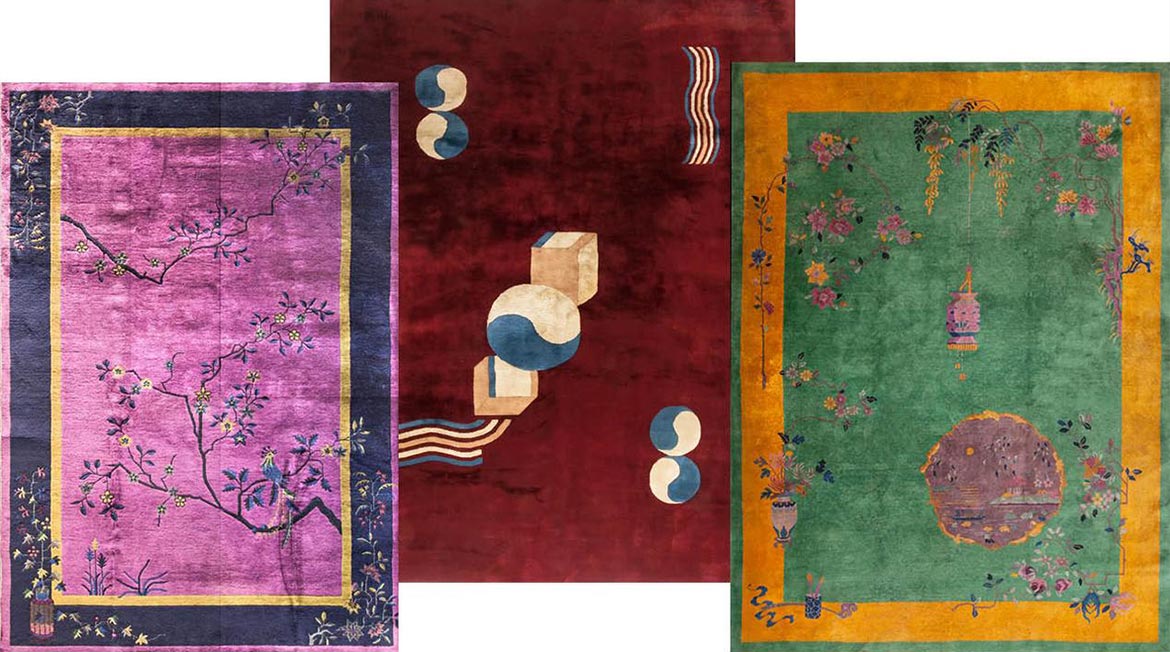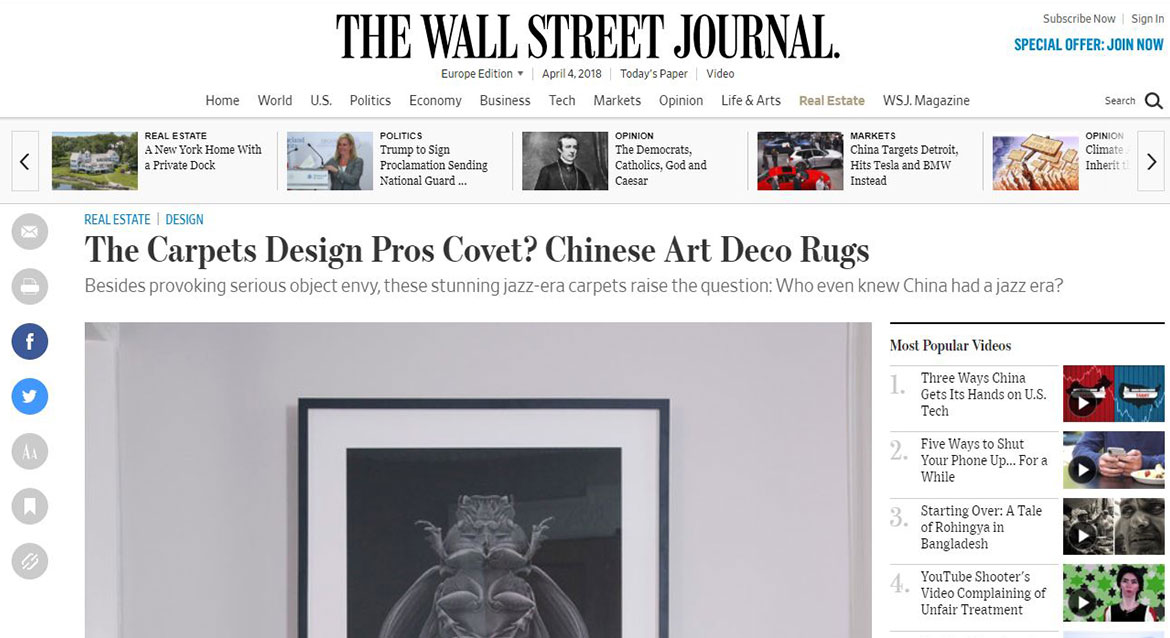This article originally appeared in the October 2017 issue of The Wall Street Journal
Exclusive access to the rare collection of vintage Persian rugs & oriental carpets.
The Carpets Design Pros Covet? Chinese Art Deco Rugs
Besides provoking serious object envy, these stunning jazz-era carpets raise the question: Who even knew China had a jazz era?
IN 1925, SHANGHAI was the world’s third largest city, known as the Paris of the East. That year, France hosted the Exposition International—the fair that promoted modern design in the decorative arts, which came to be known as Art Deco—with a Chinese pavilion by Paris-trained architect Liu Jipiao. Within a couple of decades, a crescent of Art Deco banks and hotels rimmed Shanghai’s waterfront, many still standing.
Though few people associate the luxurious but pared-down interwar style with China, interior designers today are mining that country’s iteration of Art Deco, especially the vibrant, sparely patterned carpets that came out of Tianjin and sold in Shanghai. Ramin S. Hakimi of the Antique Rug Studio in Manhattan said he recently shipped some to a new boutique hotel in Charleston, and added that hotelier Sean MacPherson, the man behind New York hipster hotels the Ludlow and the Jane, ordered a stack for his forthcoming reboot of the city’s storied Hotel Chelsea. (Mr. MacPherson’s publicist could not confirm the rugs will feature in the final design.) And in a Manhattan apartment, color-besotted designer Miles Redd planted a lavender-fielded rug in a little girl’s bedroom.

“You never see this palette in Persian rug or other Chinese rugs,” said Mr. Redd. “Turkish rugs are reds, browns and navy.” In the Chinese Art Deco carpets, central expanses in heady amethyst purple, emerald green, citrine yellow, fuchsia, teal and midnight blue are scattered with peonies and pagodas rendered in a simplified, stylized manner. Bamboo stalks and weeping willows sweep across the wide, contrasting borders. The late Elizabeth Bogen, a scholar of Chinese Art Deco rugs, observed that their designers clearly studied abroad and were exposed to Art Nouveau, Fauvist and Cubist art.
“It’s not hard-edge Deco,” explained Manhattan rug consultant Peter Saunders of the floral motifs found in circa-1920s rugs. By the 1930s, the borders had entirely disappeared and flowers had given way to bolder, geometric shapes more commonly associated with Art Deco.
The lustrous, deep-pile heavyweights boast distinctive motif placement as well. “Peking rugs [feature] more allover patterning, usually with a central medallion,” said Mr. Saunders, whereas most Deco designs are asymmetrical.
“Asymmetrical is anti-Persian and anti-Chinese,” said Elisabeth Poole Parker, a consultant and former international head of Christie’s carpet department, with a laugh. “You would never see wildflowers in one corner but not the other on traditional rugs.”

The best-known manufacturer was Walter Nichols, a New Yorker who operated from Tianjin, China, until he fled the invading Japanese in 1935. His wool carpets were sold in Shanghai, and in the U.S., through luxury department stores such as B. Altman and W. & J. Sloane. “He stamped his rugs ‘Made in China by Nichols’ on the backside of the woven fringe,” said Mr. Hakimi.
Design pros value the carpets’ aesthetic versatility. WRK Design paired a blue example with an emphatically modern red Saarinen womb chair and a plastic storage table (see above). For the aforementioned girl’s bedroom, Mr. Redd gave his lavender rug a more traditional spin, pairing it with a Louis XV chair in green velvet and trellis wallpaper—albeit on the ceiling.

This article originally appeared in the October 2017 issue of The Wall Street Journal
